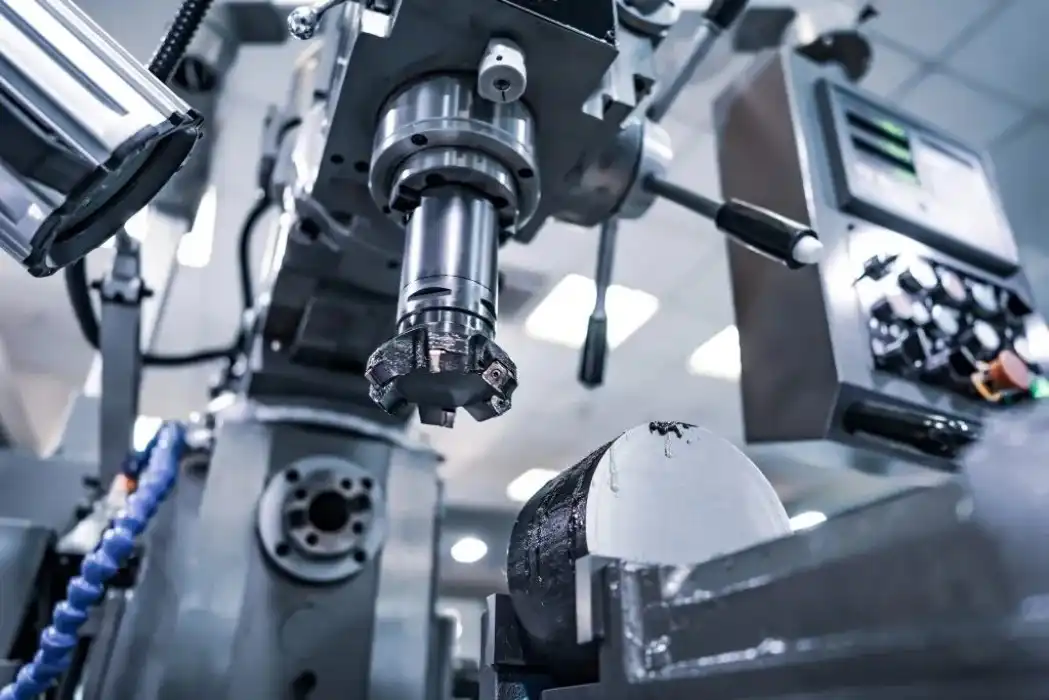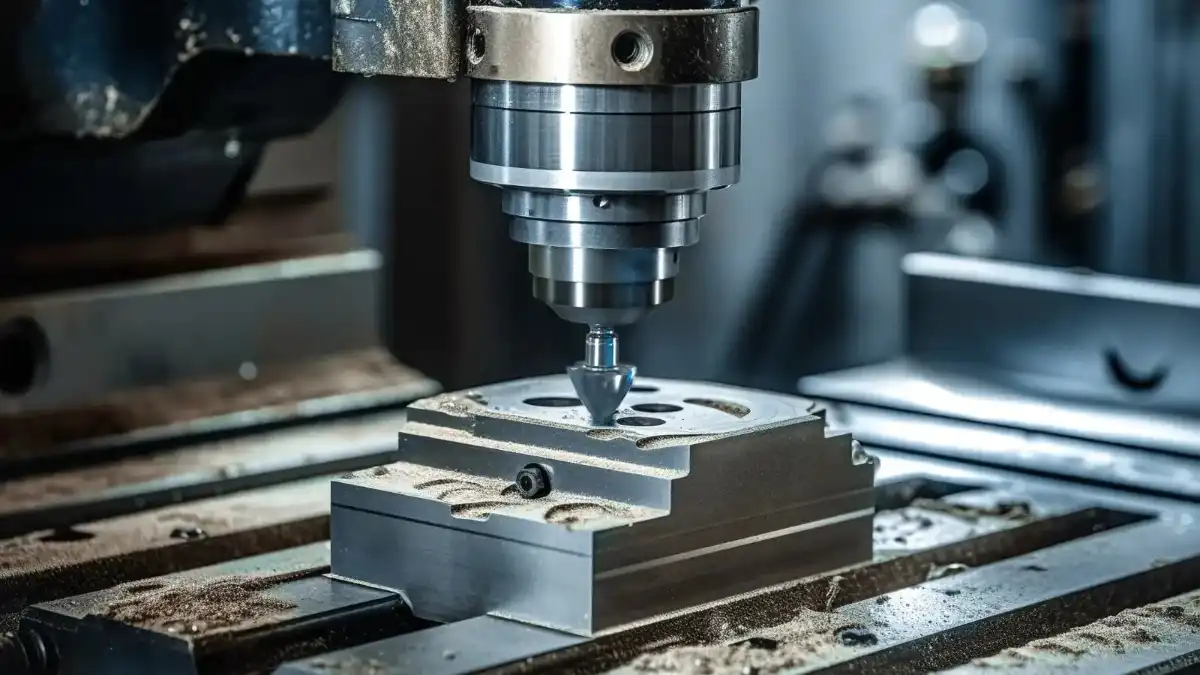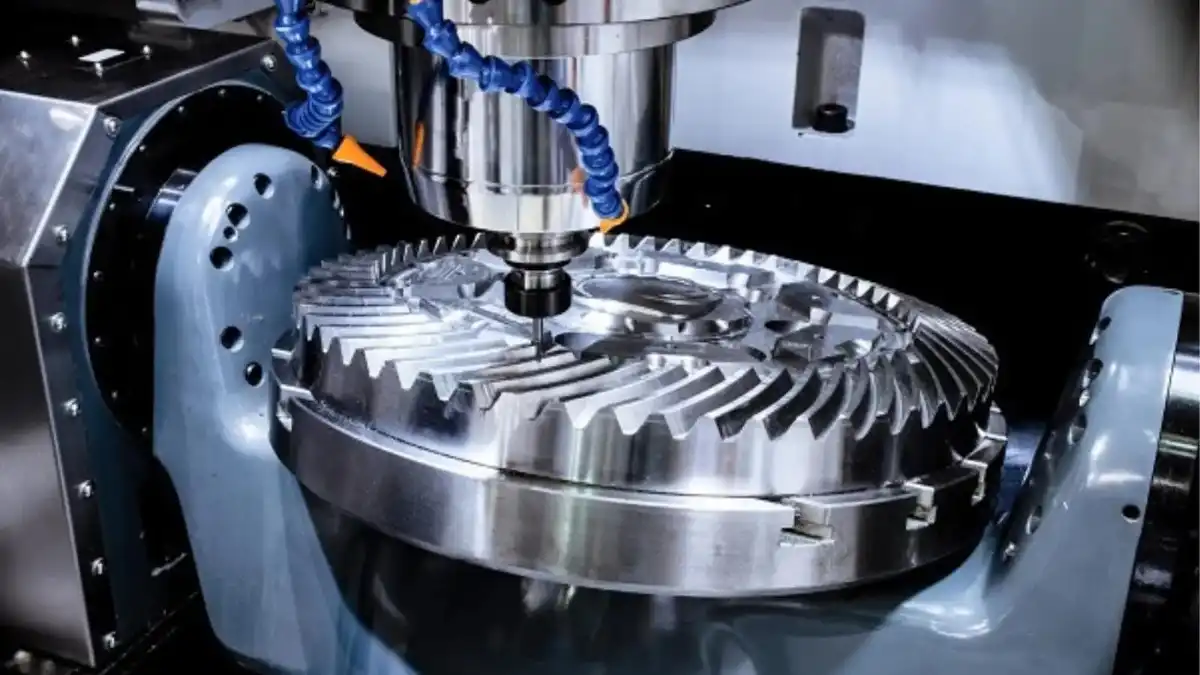What Is The Difference Between CNC Milling And CNC Turning
CNC milling and CNC turning are two distinct machining processes that fall under the umbrella of Computer Numerical Control (CNC) manufacturing. The main difference lies in the movement of the cutting tool and the workpiece. In CNC milling, the cutting tool rotates while the workpiece remains stationary, allowing for the creation of complex shapes and features on various surfaces. On the other hand, CNC turning involves a rotating workpiece while the cutting tool remains stationary, primarily used for creating cylindrical parts. Milling is ideal for producing parts with multiple features, while turning excels in creating symmetrical, round components. Understanding these differences is crucial for selecting the appropriate machining process for your specific manufacturing needs.
Understanding CNC Milling: Process, Applications, and Advantages
The CNC Milling Process Explained
CNC milling is a versatile machining technique that uses computer-controlled rotary cutters to remove material from a workpiece. The process begins with a 3D CAD model, which is then translated into a set of instructions for the CNC machine. These instructions guide the movement of the cutting tool across the workpiece, shaping it according to the desired specifications.
The milling process can be performed on various materials, including metals, plastics, and composites. It allows for precise control over the depth and direction of cuts, enabling the creation of complex geometries and intricate features. Multi-axis milling machines can approach the workpiece from multiple angles, further expanding the range of possible shapes and designs.
Applications of CNC Milling in Modern Manufacturing
CNC milling finds applications across numerous industries due to its versatility and precision. In the automotive sector, it's used to produce engine components, transmission parts, and custom body panels. Aerospace manufacturers rely on CNC milling for creating lightweight yet strong structural components and precision parts for aircraft and spacecraft.
The medical industry utilizes CNC milling to fabricate surgical instruments, implants, and prosthetics. In the electronics field, milling is essential for producing circuit boards, heat sinks, and custom enclosures. The technology also plays a crucial role in the production of molds and dies for injection molding and metal forming processes.

Advantages of CNC Milling in Precision Manufacturing
CNC milling offers several advantages that make it a preferred choice for many manufacturing applications. Its high precision and repeatability ensure consistent quality across production runs, reducing waste and improving overall efficiency. The ability to produce complex geometries in a single setup minimizes the need for multiple machining operations, saving time and reducing the potential for errors.
The flexibility of CNC milling allows for quick changes in production, making it ideal for prototyping and small-batch production. Advanced software integration enables seamless transitions from design to manufacturing, streamlining the entire production process. Additionally, the automation capabilities of CNC milling machines reduce labor costs and increase productivity, making it a cost-effective solution for many manufacturers.
CNC Turning: Principles, Applications, and Benefits
The Fundamentals of CNC Turning Operations
CNC turning is a machining process that involves rotating a workpiece while a stationary cutting tool removes material to create the desired shape. The process is particularly suited for producing cylindrical parts with both external and internal features. Like milling, turning operations are guided by computer-controlled instructions derived from CAD models.
In CNC turning, the workpiece is held in a chuck and rotated at high speeds. The cutting tool, mounted on a turret, moves along the axis of rotation and perpendicular to it, allowing for precise shaping of the workpiece. Advanced CNC lathes can perform multiple operations, including turning, boring, drilling, and threading, in a single setup.
Common Applications of CNC Turning in Industry
CNC turning and CNC milling are widely used in industries that require precision cylindrical components. In the automotive sector, they're employed to manufacture shafts, pistons, and other rotary parts. The aerospace industry relies on CNC turning and CNC milling for producing turbine components, fasteners, and hydraulic fittings.
In the oil and gas industry, CNC turning and CNC milling are crucial for creating drilling equipment components and pipeline fittings. The processes are also extensively used in the production of consumer goods, such as household appliances and electronic devices, where they're used to create various shafts, housings, and connectors.

Key Benefits of CNC Turning in Manufacturing
CNC turning offers several advantages that make it indispensable in modern manufacturing. Its high accuracy and repeatability ensure consistent quality in mass production scenarios. The process is particularly efficient for creating symmetrical parts, with the ability to achieve tight tolerances and excellent surface finishes.
The automation capabilities of CNC turning machines reduce labor costs and minimize human error, leading to increased productivity and reduced waste. Multi-axis turning centers can perform complex operations in a single setup, reducing production time and improving overall efficiency. The flexibility of CNC turning also allows for quick changeovers between different part designs, making it suitable for both large-scale production and small batch runs.
Comparing CNC Milling and Turning: Making the Right Choice for Your Project
Factors to Consider When Choosing Between Milling and Turning
Selecting the appropriate CNC machining process depends on several factors. The geometry of the part is a primary consideration. Milling is typically preferred for parts with complex 3D shapes, multiple features, or flat surfaces. Turning is ideal for cylindrical parts or components with rotational symmetry.
Material characteristics also play a role in the decision. While both processes can handle a wide range of materials, certain materials may be better suited to one process over the other. The required tolerances and surface finish specifications can influence the choice, as each process has its strengths in achieving specific quality standards.
Cost and Efficiency Comparisons
The cost-effectiveness of CNC milling versus turning can vary depending on the specific project requirements. For parts with complex geometries or multiple features, CNC milling may be more efficient, as it can often complete the part in a single setup. Turning, however, can be more cost-effective for high-volume production of cylindrical parts due to its faster cycle times.
Set-up times and tooling costs should also be considered. CNC milling may require more complex fixturing and a variety of cutting tools, potentially increasing setup time and costs. Turning typically requires simpler setups but may need multiple operations for complex parts

Hybrid Solutions: Combining Milling and Turning
In many cases, the optimal solution involves a combination of both milling and turning. Modern CNC machines, known as mill-turn centers or multi-tasking machines, integrate both capabilities into a single platform. These hybrid solutions offer the best of both worlds, allowing for the efficient production of complex parts that require both rotational and prismatic features.
By combining milling and turning operations in a single setup, these machines can significantly reduce production time, improve accuracy, and minimize the need for multiple setups. This approach is particularly beneficial for industries that require high-precision components with both cylindrical and non-cylindrical features, such as aerospace and medical device manufacturing.
Conclusion
Understanding the differences between CNC milling and CNC turning is crucial for making informed decisions in manufacturing. While milling excels in creating complex, multi-faceted parts, turning is unmatched in producing precise cylindrical components. The choice between these processes depends on factors such as part geometry, material properties, production volume, and cost considerations. In many cases, a combination of both techniques yields the most efficient and effective results. As technology continues to advance, the integration of milling and turning capabilities in single machines is revolutionizing the manufacturing landscape, offering unprecedented flexibility and efficiency in part production.
FAQs
What materials can be machined using CNC milling and turning?
Both processes can handle a wide range of materials, including metals, plastics, and composites.
Which process is better for high-volume production?
Turning is generally more efficient for high-volume production of cylindrical parts, while milling may be preferred for complex, non-cylindrical components.
Can CNC milling and turning be used for prototyping?
Yes, both processes are suitable for prototyping, offering quick turnaround times and the ability to produce precise, functional parts.
How do the setup times compare between milling and turning?
Milling often requires more complex setups, while turning typically has simpler setups but may need multiple operations for complex parts.
Expert CNC Machining Services | BOEN
At BOEN, we specialize in delivering high-quality CNC machining services, including both milling and turning. Our state-of-the-art equipment and skilled team ensure precision and efficiency in every project. Whether you need complex milled components or precise turned parts, we have the expertise to meet your requirements. For custom machining solutions tailored to your specific needs, contact us at contact@boenrapid.com.
References
1. Smith, J. (2022). Advanced CNC Machining Techniques. Journal of Manufacturing Technology.
2. Johnson, A. (2021). Comparative Analysis of CNC Milling and Turning Processes. International Journal of Precision Engineering.
3. Brown, R. (2023). Hybrid Machining Solutions: The Future of CNC Manufacturing. Advanced Materials Processing.
4. Lee, S. (2022). Material Considerations in CNC Machining. Materials Science and Engineering.
5. Wilson, T. (2021). Cost-Efficiency in CNC Machining: Milling vs. Turning. Journal of Industrial Engineering.
6. Garcia, M. (2023). Multi-Axis Machining: Expanding the Possibilities of CNC Manufacturing. Robotics and Computer-Integrated Manufacturing.

How Can We Help?

Your Trusted Partner in Rapid Manufacturing.



